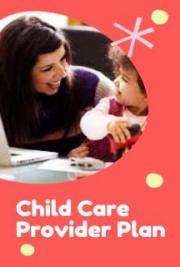How To Raise Healthy Kids For Life
5 Steps You Can Take Today To Change Your Child’s Future
 How To Raise Healthy Kids For Life
How To Raise Healthy Kids For Life
5 Steps You Can Take Today To Change Your Child’s Future
Childhood obesity is growing at an alarming rate. You know that. You hear the news, read the articles and watch the reality shows on television. Our beautiful children are suffering from diabetes, heart disease, eating disorders, and the resulting shame that being overweight often results in. They deserve better. They deserve to live rich, full lives abundant with laughter, activity and the joy of feeling pride in themselves. They deserve to look in the mirror and be proud of who they are. This isn’t about vanity it’s about self-confidence.
Our children are our responsibility. Even as they grow into adults, if we haven’t provided them with a foundation of healthy skills and habits, they will suffer and make harmful health choices. The following pages will highlight on ten very important, but simple steps that you can take today to change your child’s life for the better. These steps will teach them how to care for themselves so that they feel better physically, mentally, and emotionally.
Don’t stress ‘diet’s’ or ‘weight loss’ in children. It only teaches them to be self conscious and ashamed of their bodies. Teach your children to appreciate themselves for who they are and to be the best person that they can be. When they love themselves, they’ll take better care of their bodies as children and as adults.
Let’s get started! Step One: Understanding Proper Nutrition
Proper nutrition means that your child is getting all of the nutrients and vitamins that they need to grow strong and healthy. They need their calories and nutrients to be dispersed throughout the day, which means that skipping breakfast, having a candy bar for lunch and then having a healthy dinner isn’t giving them what they need to perform well during the day. Instead, offer your children 4-5 smaller meals each day or three main meals with two healthy snacks.
The average child age 4-8 needs about 1300 calories a day. The average 9-13 year old needs about 1700 calories a day and children 14-18 need about 2000 depending on their activity levels and development. These calories can be broken down into three main meals consisting of a lean protein, vegetable or fruit, and a carbohydrate.
That’s not easy to do, many parents protest. My child is choosy about what they eat. That may be true but no child has ever let itself starve. Children, how ever picky they may seem at the dinner table, will eat healthy foods if they’re placed in front of them. More importantly, healthy food doesn’t need to taste bad.
For example, a healthy breakfast consisting of a bowl of low sugar cereal with low fat milk, a banana, and a glass of juice is a fantastic start to your child’s day. Mix it up and offer a whole grain frozen waffle with fruit, maple syrup and a glass of low fat milk and your child has the fiber, protein, and fruit serving that they need to start their day on the right foot.
The federal government’s website on nutrition offers a food pyramid just for children and a PDF that outlines portion size by age. It’s a handy resource that you can print out and refer to as you you’re your family’s meals. When you learn what your child is supposed to be eating, it’s easy to give it to them in a way that fits both your needs. There are easy to prepare foods available, even prepackaged foods that are healthy. Read the labels. Avoid foods that are high in sugar, saturated fats, trans fats and chemicals that you cannot pronounce. One bit of advice that many health care professionals and nutritionists like to share is “If your great grandmother wouldn’t recognize it, don’t serve it to your child.” Meaning quite simply, if it is full of chemicals and preservatives, don’t feed it to your child.
The goal of this exercise isn’t to chain you to the kitchen to prepare nutritional meals for your child, it’s to make it easy for you, your child, and your entire family to eat well – even with today's busy lives.
 Step Two: Healthy Kids Begin With Healthy Parents
Step Two: Healthy Kids Begin With Healthy Parents
Take the time to be a good role model. There’s no doubt about it, healthy kids begin with healthy parents. As a parent, regardless of the words that come out of your mouth, it is your actions that your children really pay attention to. You can profess up and down how strongly you believe that good nutrition is vital for their health and development, if you’re sitting on the couch with your hand in a bag of chips, they’ll get the message that you don’t want them to hear. “These chips are better than an apple any day.”
If you want them to eat a good breakfast, then prepare a good breakfast and sit down with them.
You want your children to make healthy choices when they are away from you at school and their friend’s homes.
Help your child develop healthy habits by:
• Asking them to assist with the meal preparation and shopping.
• Ask them to plan and prepare their sack lunches for school.
• Ask them to choose the menu one evening each week.
• Learn about nutrition and healthy habits together.
Once your children know what foods are good for their bodies, and they feel the results, they will begin to make better choices about what they put into them. However, they won’t learn how to make those healthy choices, and they won’t be interested in making them, unless your actions support the habits. Things you can do to reinforce your child’s healthy habits:
• Take time to fill the house with healthy snacks
• Don’t drink soda and eat junk food while forbidding your child to eat it
• Do offer dessert night or special occasions where you and your child can
enjoy a treat
• Do engage your child in the planning and preparation of meals
When you take time to become a health conscious role model for your child, you benefit too. You and your child will have more energy, you’ll feel happier, stronger, and when you prepare meals together you’ll share bonding moments that will last a lifetime.
 Step Three: Expose Your Child to a Variety of Sports and Activities
Step Three: Expose Your Child to a Variety of Sports and Activities
Let’s face it, we’re not all going to enjoy and be good at soccer. We’re not all marathon runners or rock climbers or Olympic skiers.
But physical activity is important. It is important to keep our bodies moving and burning calories, it’s important for our heart, muscles and lungs. Physical activity is important for our metabolism, our development, our immune system, our coordination and even for our happiness. When we’re physically active, endorphins are released which stimulate feelings of happiness and well-being.
Without physical activity, we suffer. Your children suffer. They miss out on the valuable health benefits of exercise but they also miss out on the mental and emotional benefits.
Sports engage us to set goals, to problem solve, to work with others to achieve a common goal. They teach us to be better people than we are. Children gain a sense of pride from participating in sports. They learn the value of competition. They learn the value of themselves.
The good news is that there are hundreds, possibly thousands of sports that your child can try. In fact, it is important to expose your child to a number of activities so that they can not only find a sport that fits their personality, they can find a sport that fits their abilities.
Soccer is obviously a sport that is commonly available for children of all ages and abilities. Basketball, baseball, and even football leagues begin at a young age. What about:
• Jump Roping
• Dancing
• Karate
• Rock Climbing
• Snow Boarding
• Skateboarding
• Running
• Volleyball
• Gymnastics
• Bicycling
• Swimming
The list could go on and on. Expose your child to as many sports as you can at an early age and they’ll instinctively develop good habits. They’ll learn the value of physical exercise. They’ll learn how to set goals for themselves – and how to reach them. They’ll learn what it means to win, and what it means to lose.
Step Four: Make Sports and Exercise a Family Event
Just as your children learn from your behavior and actions towards nutrition, they also follow your example when it comes to physical activity. If you want your children to be physically active and involved in sports, you need to demonstrate that it’s an important part of your life too.
Take up a new sport. Try karate with your child. Explore yoga, join a running club, or even learn to rock climb. The world is full of adventures for both you and your children. Show your children how to seize life and they will thank you for it.
If your child is expressing an interest in running, or any sport, but they’re not sure where to start, you can show them your support by:
• Running or training with them
• Helping them find the right gear.
• Helping them locate and register for races
• Guiding them on the type of running they want to try;
distance, sprinting, trail running, relays etc.
• Show up for all races and events
Another way to demonstrate that physical exercise is an important aspect in your life and your child’s life is to participate in physical activity together. Go for a family bike ride. Take your family on a hike. Go rafting or canoeing on your local river or lake. Play Frisbee, golf, Frisbee golf, baseball, basketball, or even football as a family. Take a ski weekend in the winter, go sledding or snow shoeing. The world is your playground. Teach your children to enjoy it.
Step Five: Limit TV/Computer Time
One of the biggest time killers for children of all ages, and adults too, is the television, computer, and video games. Children can spend hours of their precious time parked in front of a screen. Time that could be better used playing outside, practicing their favorite activity, or even reading a book.
Also, quite often this time spent in front of a screen leads to unhealthy eating habits. After all, how can you prepare a sandwich while you’re engrossed in the latest video game or social networking site? You can’t, you have to grab a quick snack and head right back to what you were doing.
A quick and easy remedy to this problem is to limit their time in front of the screen. Take the games, computers, and televisions out of their bedrooms and move them into one location, preferably the family room, where everyone has access to them.
Don’t want to hear the complaints, protests, and general whining when you tell them that they cannot watch TV or get onto the computer? Attach one of the many electronic nanny devices that control the electronics for you. It doesn’t have to be a password type device, there are debit card systems that you can purchase for a low price. One popular model gives each their own debit card that they have to use if they want to watch television. As a parent, you give the child a certain amount of time at the beginning of each week. If your child decides to use all of their time in one day, that’s all they get for the entire week.
These devices teach children to budget their television and computer time while at the same time it eliminates the responsibility from the parents. You no longer have to hear “Mom, can I watch TV?” and then hear the inevitable complaints when you say no. Now they’re in charge of when they watch TV, until their time runs out.
Of course, many children will promptly sit down and watch their entire allotment of television the moment you add time on their cards. This will result in several days of aimless wandering while they try to figure out how to fill the time. No worries, give them plenty of books and activities indoors and when the inevitable “I’m bored” pops out of their mouth – send them outside or put them to work!
 Conclusion:
Conclusion:
The road to healthy children isn’t as dire and painful as many experts would like us to believe. However, it is a commitment. As a parent you have to commit to:
• Educating yourself on proper nutrition for yourself and your child
• Taking the time to plan nutritious meals.
• Demonstrating by example what good nutrition is
• Supporting your child in finding healthy, tasty food
• Supporting your child to become an active member of the food preparation process
• Supporting your child to find physical activities that they enjoy
• Supporting your child to try new things
• Demonstrating by example that you believe in staying active
• Demonstrating what it means to love yourself, by taking care of yourself so that your child can emulate your behavior and love themselves too.
The steps to take to help your child live a long, happy and healthy life aren’t difficult but they take a commitment on your part. Know that the habits that your child develops will stick with them for the rest of their lives. The habits that you help them develop, whether they’re healthy habits or harmful habits; will be passed on to your children’s children.
Take care of yourself, take care of your children and begin developing better, healthy habits today.
Take Care!
Copyright www.firstmedicalonline.com
ALL RIGHTS RESERVED
No part of this report may be reproduced or transmitted in any form whatsoever, electronic, mechanical, including photocopying, recording or by any informational storage or retrieval system without express written, dated permission from the author.
You may distribute this e-book in its current form











